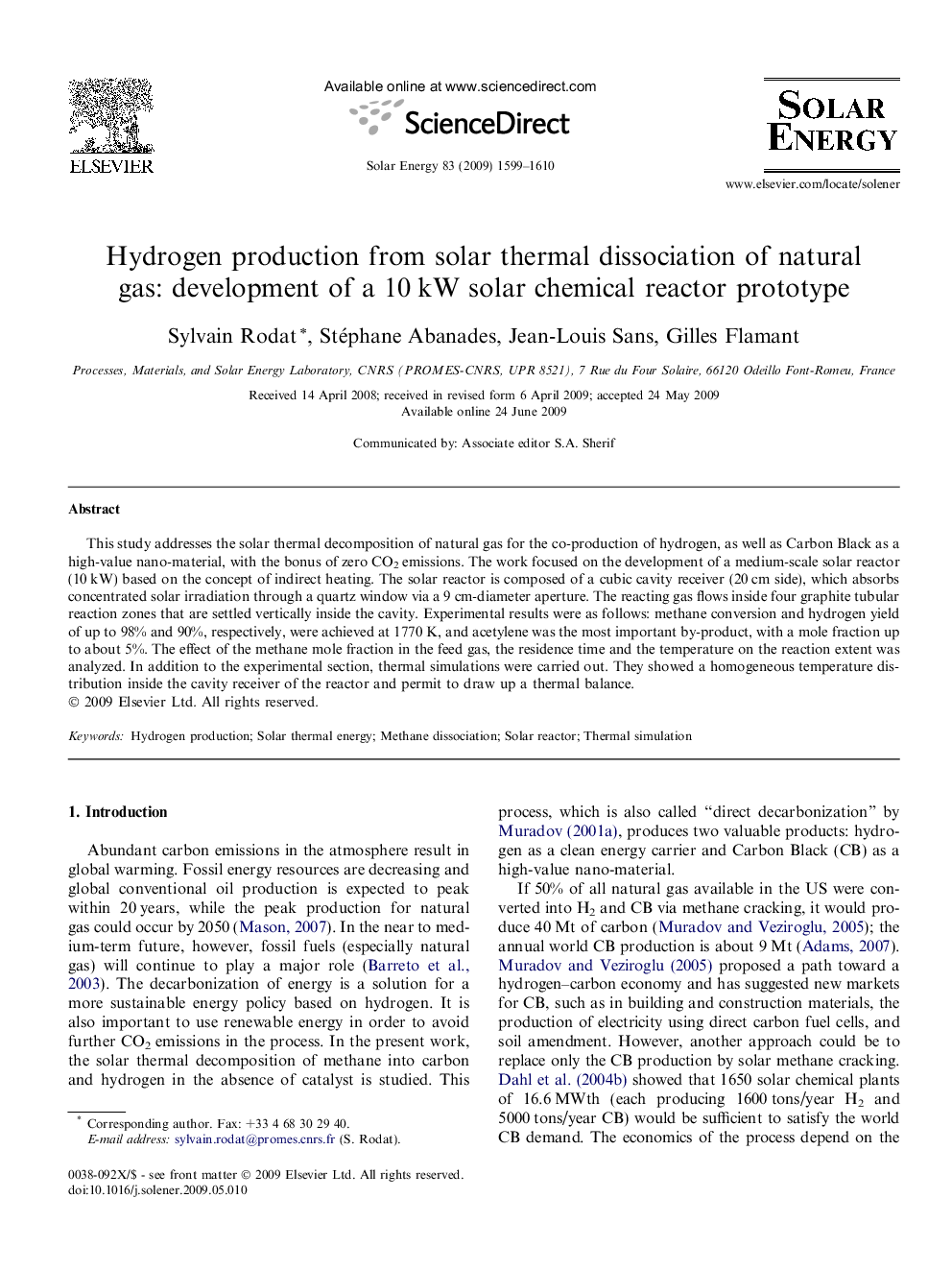| Article ID | Journal | Published Year | Pages | File Type |
|---|---|---|---|---|
| 1551611 | Solar Energy | 2009 | 12 Pages |
This study addresses the solar thermal decomposition of natural gas for the co-production of hydrogen, as well as Carbon Black as a high-value nano-material, with the bonus of zero CO2 emissions. The work focused on the development of a medium-scale solar reactor (10 kW) based on the concept of indirect heating. The solar reactor is composed of a cubic cavity receiver (20 cm side), which absorbs concentrated solar irradiation through a quartz window via a 9 cm-diameter aperture. The reacting gas flows inside four graphite tubular reaction zones that are settled vertically inside the cavity. Experimental results were as follows: methane conversion and hydrogen yield of up to 98% and 90%, respectively, were achieved at 1770 K, and acetylene was the most important by-product, with a mole fraction up to about 5%. The effect of the methane mole fraction in the feed gas, the residence time and the temperature on the reaction extent was analyzed. In addition to the experimental section, thermal simulations were carried out. They showed a homogeneous temperature distribution inside the cavity receiver of the reactor and permit to draw up a thermal balance.
